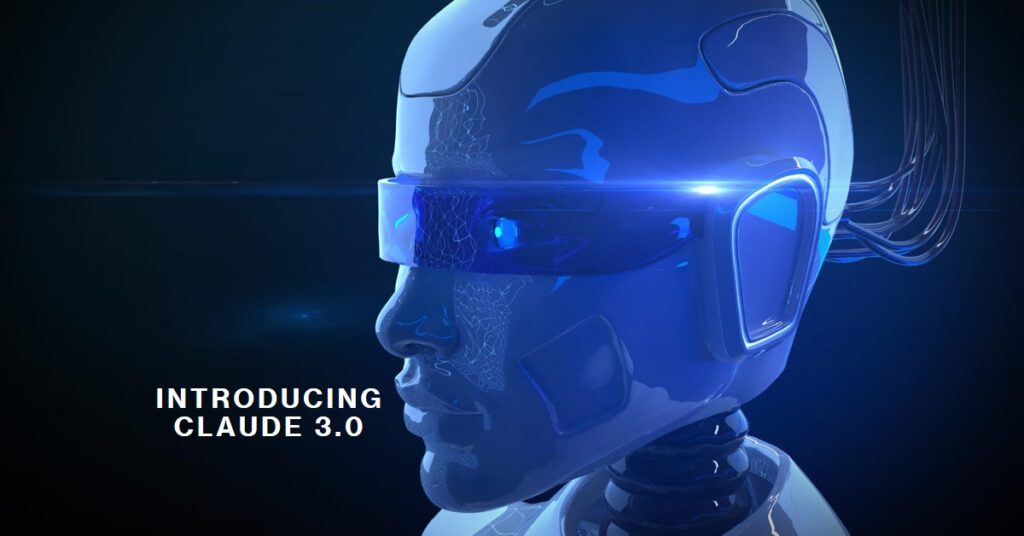Key Takeaways
- Claude 3.0 is the latest generation of AI assistant created by Anthropic to be helpful, harmless, and honest.
- It includes 3 models – Claude 3 Opus, Claude 3 Sonnet, and Claude 3 Haiku – with increasing levels of intelligence.
- Claude 3 models achieve new benchmarks in comprehension, reasoning, speed, accuracy, and safety.
- Key capabilities include processing complex instructions, generating high-quality content, understanding vision inputs, and responsibly refusing inappropriate requests.
- Anthropic prioritizes AI safety through techniques like Constitutional AI, red teaming, bias testing, and monitoring models after release.

Claude 3.0 represents a major leap forward in artificial intelligence technology thanks to advances by AI research company Anthropic. Claude 3 introduces three new natural language models – Opus, Sonnet, Haiku – with significantly improved intelligence compared to previous versions like Claude 2.
“With Claude 3, we have achieved new heights in AI capability while upholding critical standards of safety and responsibility. This allows us to deliver substantial value to enterprises without compromising ethics or transparency.” – CEO Dario Amodei, Anthropic
The Claude 3 model family pushes boundaries on benchmarks measuring comprehension, reasoning, speed, accuracy, and common sense. Let’s explore what makes Claude 3 special and how these models work.
Inside the Claude 3 ai Model Family
The Claude 3 model family includes 3 generative AI models built using Anthropic’s Constitutional AI techniques:
- Claude 3 Opus – Most capable model with cutting-edge intelligence and reasoning.
- Claude 3 Sonnet – Optimized balance between speed and intelligence.
- Claude 3 Haiku – Compact and fast model for simple queries.
Claude 3 Opus represents the pinnacle of language AI today with human-like mastery over complex reasoning tasks. It achieves state-of-the-art results on benchmarks like GSM8K, MMLU, and GPT-3 QA which require sophisticated understanding.
Some key traits of Opus:
- Virtually flawless comprehension of long, nuanced instructions
- Remarkable ability to generate high-quality content like articles, code, and creative work
- Sophisticated analysis of charts, graphs, diagrams across technical domains
- Capacity to process over 1 million tokens of context
- Cutting-edge performance in non-English languages like French, Spanish, Russian
Claude 3 Sonnet strikes an optimal balance between speed and strong analytical abilities. It delivers robust intelligence roughly on par with GPT-3.5 models at a fraction of the cost. This makes Sonnet ideal for enterprise applications.
Notable capabilities of Sonnet include:
- Answering common business questions with >95% accuracy
- Classifying, processing, and generating insights from vast datasets
- Automating data entry or content moderation workflows
- Adhering to brand voice guidelines and producing compliant content
- Parsing complex documents like legal contracts or research papers
Finally, Claude 3 Haiku is an ultra-fast model optimized for lightning-quick responses to simple queries and requests. It achieves new low latency records while still exhibiting higher smarts than previous compact models.
Haiku is built for use cases like:
- Providing instant answers to customer questions
- Powering smooth conversational experiences
- Classifying data or moderating content in real-time
- Personalizing recommendations and notifications
- Extracting key details from documents on the fly

Comparison of Claude 3 Models
| Model | Opus | Sonnet | Haiku |
|---|---|---|---|
| Speed | Fast | Very Fast | Ultra Fast |
| Intelligence Level | Cutting Edge | Strong | Capable |
| Ideal Use Cases | Advanced reasoning, content creation | Scaled enterprise applications | Customer service, real-time processing |
| Cost Per Million Tokens | $15 input / $75 output | $3 input / $15 output | $0.25 input / $1.25 output |
How Claude 3 Advances AI Capabilities
The Claude 3 model family represents a major leap forward in AI quality and safety.
Some of the key areas it pushes boundaries:
1. Comprehension of Complex Instructions
Claude 3 models, especially Opus, demonstrate a remarkable ability to follow long, nuanced prompts. They can adhere to conditional logic, multi-step scenarios, and specific instructions far better than previous AI systems.
For instance, Claude 3 can:
- Plan a 10-step process to launch a new product including contingent decisions.
- Write a poem in a particular style drawing upon referenced source material.
- Discuss advanced physics concepts like relativity using graduate-level vocabulary.
This allows Claude 3 to take on challenges in creative work, research, strategic planning, and other domains that depend on sophisticated reasoning.
2. High-Quality Content Generation
Claude 3 generates content rivaling quality levels typically only achieved with extensive human prompt engineering. With minimal guidance, it can produce:
- Engaging blog posts personalized to a given author’s voice and audience
- Code that compiles correctly on the first try with appropriate comments
- Coherent executive summaries of complex technical papers or long reports
- Technical diagrams and visualizations tailored to specific concepts
This enables new applications in automated content production, code generation, and democratizing access to knowledge.
3. Understanding Vision Inputs
Claude 3 models exhibit new capabilities processing visual inputs like photos, diagrams, charts, and graphs. This allows tapping into rich knowledge often encoded in non-text formats.
Some examples of Claude 3’s vision skills:
- Summarizing key insights from a data-dense finance report
- Describing the layout and components in a technical diagram
- Identifying objects in a photo and discussing their relationships
- Explaining trends and patterns shown in a line graph
Supporting visuals alongside text unlocks new possibilities in sectors like research, engineering, finance, and healthcare.
4. Judgment on Appropriateness of Requests
Past AI systems often blindly responded to harmful, dangerous, or unethical prompts. Claude 3 represents a major step forward in responsibly handling what it should and should not do:
- Refuses to provide instructions on harmful activities
- Acknowledges requests for private data are inappropriate
- Rejects commands that exhibit racial, gender or other biases
- Explains limitations politely rather than generating false content
This thoughtfulness and care around AI safety reflects Anthropic’s focus on Constitutional AI. Users can trust Claude 3 to provide beneficial assistance aligned with human values.
What Makes Claude 3 Better Than Alternatives
Several key innovations and techniques make Claude 3 more capable, safe, and scalable compared to other AI solutions:
- Constitutional AI – Framework designed to produce helpful, harmless, honest AI focused on empowering people.
- Access to cutting-edge research – Ability to incorporate latest advances from Anthropic’s 200+ AI researchers.
- Model scaling laws – Careful tuning using techniques like mixture-of-experts to balance model size, speed and capabilities.
- Thoughtful training approaches – Methods like Constitutional Learning and Constitutional Prompting yield models attuned to safety.
- Responsibility controls – Beyond just content filtering, ensures AI acts within intended limits of use case.
- Ongoing red teaming – Probes for risks and biases using adversarial techniques to address issues.
- Lifecycle monitoring – Continuously audits model performance after deployment to catch any emerging problems.
These allow Claude 3 to deliver powerful AI that users can trust will behave responsibly.
Real World Applications of Claude 3
With its robust comprehension and generation abilities, Claude 3 enables a broad range of uses cases across industries:
Customer Service and Sales
- Provide accurate, personalized support 24/7 via chatbots
- Understand and resolve complex customer issues
- Generate tailored sales scripts adhering to brand voice
- Forecast revenue more accurately based on historical data
Knowledge Management
- Extract insights from vast manuals, reports, and documentation
- Produce executive summaries of long technical documents
- Organize enterprise data into logical categories and databases
- Answer employee questions drawing upon institutional knowledge
Creative Work and R&D
- Assist writers, programmers, designers with relevant ideas and content
- Accelerate research by analyzing connections across literature
- Develop hypotheses and surface non-obvious trends in data
- Brainstorm analogies linking concepts across scientific domains
Process Automation
- Classify and extract data from contracts, forms, invoices
- Plan optimal workflows for manufacturing, logistics, etc.
- Control systems by executing multi-step actions across APIs
- Parse insights from charts, graphs and visualization formats
These demonstrate just a fraction of the possibilities with AI as powerful and multifaceted as Claude 3. Its balance of capabilities, speed, and responsible design allow smooth integration across enterprises.
How Anthropic Builds Safe AI with Claude 3
As AI systems grow more capable, thoughtfully managing risks becomes even more crucial. Anthropic prioritizes safety through:
- Constitutional AI – All models aligned to be helpful, harmless, honest.
- Bias testing – Extensive suites assess for unwanted biases in data and models.
- Red teaming – Third parties probe for flaws or risks from an adversarial mindset.
- Responsibility controls – Models trained to gracefully refuse unethical acts.
- Cyber-risk reviews – Engineers monitor for emerging cyber or physical risks.
- Lifecycle audits – Continuous evaluation of models after deployment to confirm safe behavior.
These overlapping forms of testing from different perspectives minimizes the chance of harms. Users can deploy Claude 3 confident it acts within secure parameters matching the intended use case.
Anthropic also conducts careful review before releasing new model versions. Claude 3 versions like Opus and Sonnet remain classified as AI Safety Level 2 to ensure negligible risks of misuse. More powerful models are gated behind stricter access controls and monitoring.

The Future of Claude 3
Claude 3 already represents a massive leap in coherent intelligence. But Anthropic plans continued advances making AI even more helpful, harmless, and honest.
Some emerging innovations to expect:
- More efficient training approaches – Requires fewer computational resources allowing faster iteration.
- Model optimizations – Beyond accuracy, focuses on minimizing biases and responsible refusal rates.
- Specialized capabilities – Domain-specific modes like Claude Med tailored to individual industries’ needs.
- Interpretability – New ways of explaining Claude’s reasoning to maintain transparency.
- Interactivity – Abilities like Tool Use allow Claude to manipulate digital environments.
- Multimodal knowledge – Jointly utilizing information across text, images, speech, video, etc.
As Claude 3 capabilities grow, so will Anthropic’s rigorous testing and safeguards governing responsible use. The future of AI comes with great opportunity as well as risks. With Anthropic’s Constitutional AI approach, we can realize benefits while protecting what matters most.
Key Takeaways
- Claude 3.0 sets a new bar for advanced intelligence in commercial AI while upholding safety.
- It includes 3 models: Opus, Sonnet, Haiku with increasing speed and capabilities.
- Claude 3 demonstrates massive improvements in understanding instructions, generating content, parsing visuals, and appropriate refusal.
- Anthropic applies meticulous testing and Constitutional AI methods to ensure Claude aligns with human values.
- Claude 3 enables new applications across industries like customer service, knowledge management, creative work, and process automation.
- Future Claude versions will deliver even more breakthroughs in intelligence and interpretability powered by Anthropic’s research.
Claude 3 represents the leading edge of commercial AI today, combining human-like mastery of language with thoughtful design. With Claude 3’s arrival, we have reached a pivotal point where AI can take on increasingly complex challenges while empowering human capabilities rather than replacing them.
Driven by a steadfast commitment to safety, this new generation of AI promises to help build a brighter future lifting up all of humanity.
FAQs
What is the relationship between Claude 3 and ChatGPT?
Claude 3 and ChatGPT are two leading conversational AI models developed by different companies – Anthropic and OpenAI respectively. Claude 3 aims to push boundaries on comprehension and reasoning while upholding principles of AI safety. It demonstrates superior performance compared to ChatGPT on complex benchmarks requiring nuanced understanding and judgment.
How does Claude 3 compare to the recently announced Gemini model?
Anthropic claims Claude 3 Opus surpasses the capabilities of OpenAI’s Gemini 1.0 and Gemini Pro models based on internal benchmarking. In particular, Opus shows higher accuracy on challenging QA datasets requiring reasoning. However, Gemini has not been publicly released yet, so third-party comparisons are not available.
Why does Claude 3 have 3 different models?
The Claude 3 family includes Opus, Sonnet, and Haiku to provide options balanced across intelligence, speed and cost. Opus is the most advanced while Haiku is optimized for simple queries where ultra-low latency is required. This allows tailoring the model to specific use cases.
Can I access Claude 3 via API or Claude Pro?
Yes, the Claude API provides developer access to Claude 3 models including Opus and Sonnet. Claude Pro allows users to interact directly with Claude 3, including Opus, through its conversational interface. API access starts at $0.0025 per 1k tokens for Haiku.
What complex tasks is Claude 3 suited for?
Claude 3 excels at language-based tasks requiring advanced reasoning like strategic planning, creative work, comprehending technical documents, insightful analysis, and responsible content generation. Its high level of comprehension unlocks new possibilities.
How does Claude 3 compare to the announced Gemini Pro?
Anthropic claims Opus outscores the forthcoming Gemini Pro based on internal benchmarks, but OpenAI has not released full details yet. Third-party testing will be required once Gemini Pro is available to evaluate comparative strengths and weaknesses.
Can Claude 3 operate as an AI chatbot?
Yes, Claude 3’s conversational abilities allow it to provide an AI chatbot experience similar to ChatGPT via platforms like Claude Pro. Users can have natural back-and-forth conversations with Claude 3 to inquire about a wide range of topics.
Why is Claude 3 launching in 159 countries initially?
Anthropic is taking a thoughtful approach to Claude 3 availability, launching first in 159 countries to confirm responsible AI practices before expanding access more broadly. Ongoing monitoring will help ensure beneficial use as Claude reaches global markets.
What level of conversational ability does Claude 3 have?
Claude 3 represents a significant advance in coherent, conversational intelligence compared to previous versions. All 3 models handle complex dialogue well, with Opus in particular exhibiting human-like mastery of natural language and reasoning.
How does Claude 3 advance the field of generative AI?
With major leaps forward in capabilities like content generation, visual processing, instruction following, and judgment, paired with state-of-the-art AI safety practices, Claude 3 demonstrates how to responsibly advance and apply generative AI. It sets a new standard.
